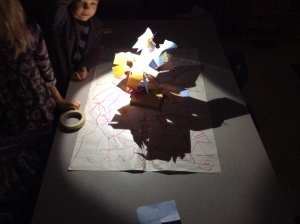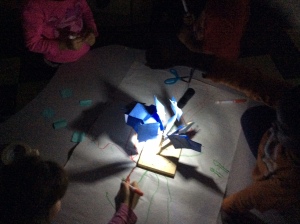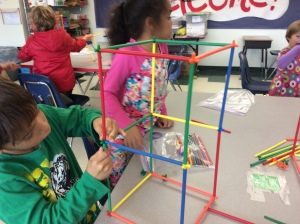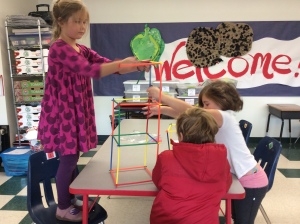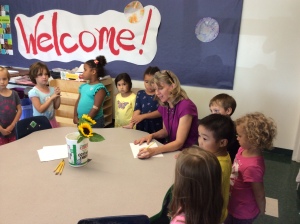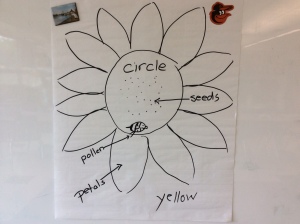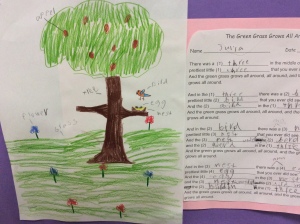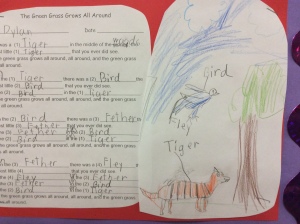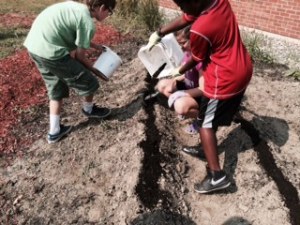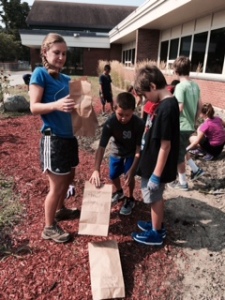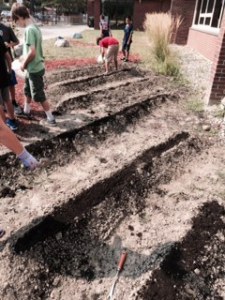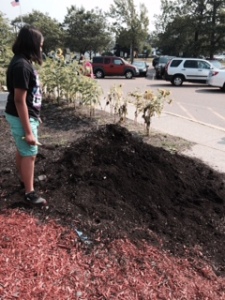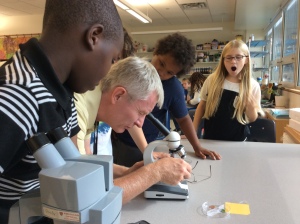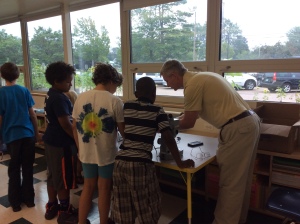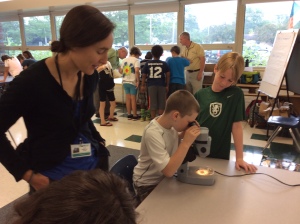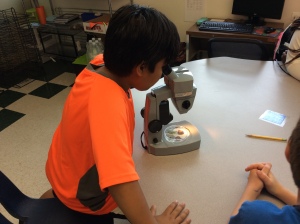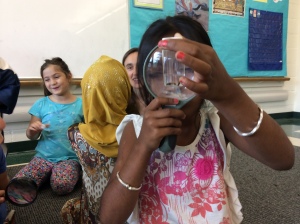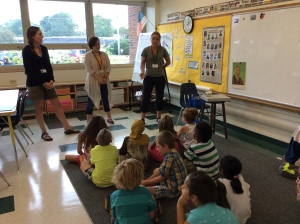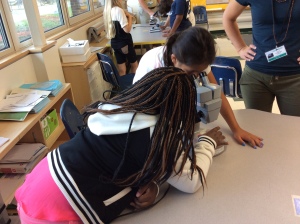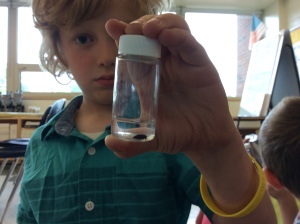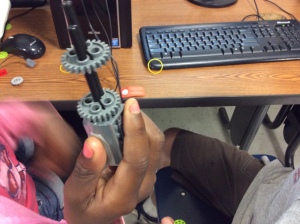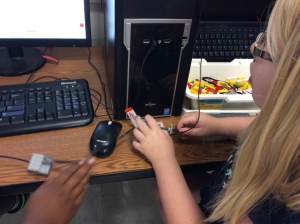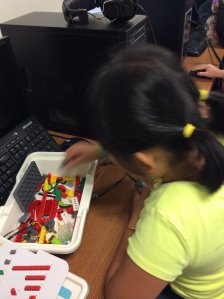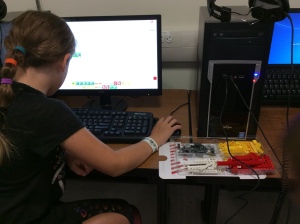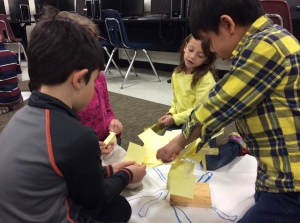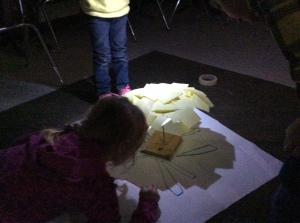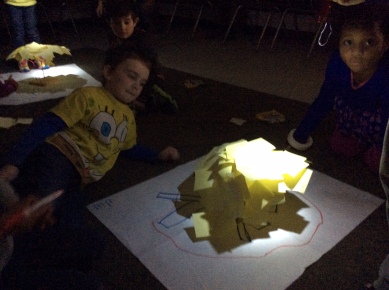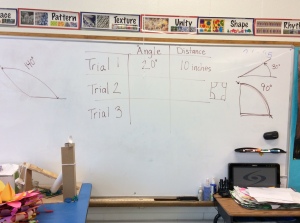First graders completed their science unit on investigations with light recently. To build on their newly formed knowledge we did some of our own lessons about light in STEAM class. These lessons were created by VEEP and dive deeper into the idea of solar energy and heat. Students first worked on creating trees. They investigated with light to investigate the differences between summer and winter trees in relation to light and heat.
Today Mrs. Peterson’s class worked as engineers to design and build structures that blocked the most light by creating the biggest shadow. While working in pairs they were involved in:
collaboration – students worked with partners to design and build with each other making sure that each student’s voice was heard.
problem solving – in two instances I witnessed students tackling issues when another partner added a piece that didn’t fit such as adding paper walls or putting two parts made separately together.
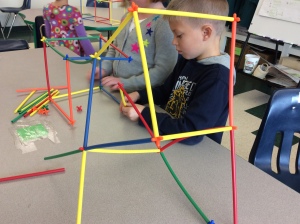
communication – students had to constantly talk to one another throughout the entire engineering process.
Next week we will discuss the differences between structures and start to improve upon student’s initial designs to create buildings with larger shadows.
